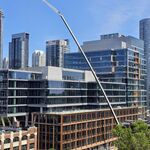Jonny5
Senior Member
Vancouver is much warmer than Toronto, especially in the winter.
And the PATH pretty much ends at Dundas (Queen in the west end). I agree it definitely should be extended to College Park at least, then eventually up to Bloor? It would be very difficult to extend the path North in the west end, because they can't really have it connect to the hospitals, can it? Maybe MARS but it would be very unrealistic to go that far without any building connections. Maybe if it is extended to College Park it can move west from there, instead of North from Queen on the west side. That would be very confusing for visitors, though. It's already enough of a maze.
I think the most likely course for extending to the hospital area is going to be when the Coach Terminal is redeveloped via The Atrium and possibly from the Eaton Centre, Canadian Tire wing area. I know this is inconvenient for access from the west side, but it is a far more likely routing to actually happen. It would be great if the new Sick Kids Research Centre could accommodate a PATH link as it would make it much easier to get to the actual hospitals.
Last edited:




